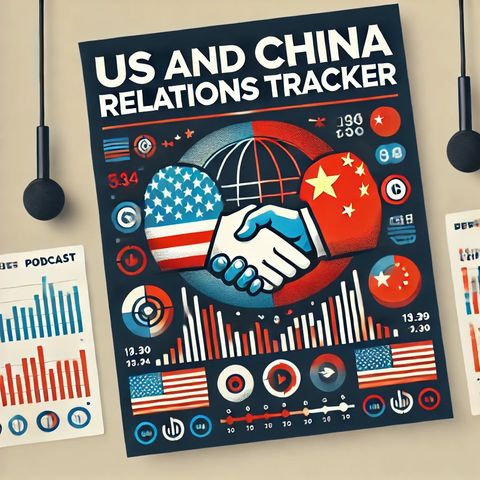Vietnam's Balancing Act: Navigating China and US Ties in the Asia-Pacific

Download and listen anywhere
Download your favorite episodes and enjoy them, wherever you are! Sign up or log in now to access offline listening.
Vietnam's Balancing Act: Navigating China and US Ties in the Asia-Pacific
This is an automatically generated transcript. Please note that complete accuracy is not guaranteed.
Description
To Lam, the General Secretary of the Communist Party of Vietnam (CPV), recently made his first foreign visit to China, an event of considerable significance in the broader context of...
show moreThe visit underscores the historical and ideological ties between Hanoi and Beijing. Both nations share communist roots and have maintained a symbiotic relationship over the decades. China remains Vietnam's largest trading partner, and their economic interdependence has only grown stronger, despite occasional territorial disputes in the South China Sea. By choosing China as his first destination, To Lam signals Vietnam's intention to solidify and perhaps elevate its relationship with its powerful neighbor.
This development is particularly noteworthy against the backdrop of escalating tensions between the United States and China. For the US, which has been seeking to bolster its influence in Southeast Asia, Vietnam's diplomatic gestures toward China might seem like a setback. The US has been actively engaged in forming stronger military and economic ties with nations in the region as part of its Indo-Pacific strategy, aimed at countering China's growing influence.
However, Vietnam's approach should not be viewed in isolation as a pivot away from the US. Hanoi has historically maintained a delicate balance, fostering relationships with both superpowers to safeguard its national interests. The Vietnamese leadership is acutely aware of the advantages of a diversified foreign policy. By strengthening ties with China, Vietnam ensures its sovereignty and regional stability while continuing to benefit from the economic and military support it receives from the US and other Western allies.
The US, for its part, has been quick to observe these developments. While the US shares a complex and often contentious relationship with China, it regards Vietnam as a crucial partner in its efforts to maintain a free and open Indo-Pacific. High-level visits between US and Vietnamese officials have become more frequent, reflecting an alignment of interests, particularly concerning trade and security.
China, on the other hand, views Vietnam as an essential player in its Belt and Road Initiative (BRI). Vietnamese cooperation provides Beijing with critical economic and strategic advantages. To Lam's visit likely included discussions on expanding BRI projects, enhancing trade routes, and fostering technological exchanges. These collaborative efforts not only bolster economic growth for both nations but also reinforce China's influence in Southeast Asia.
Despite these collaborative gestures, the underlying tension between Vietnam and China cannot be overlooked, especially concerning territorial disputes. However, both countries have shown a pragmatic approach by separating economic cooperation from their geopolitical disagreements. This dual-track diplomacy allows them to pursue mutually beneficial projects without letting conflicts derail the overall relationship.
In making China his first overseas destination, To Lam is also sending a message to the international community about Vietnam's foreign policy priorities. This visit highlights the importance of regional solidarity and the need for ASEAN countries to work together in navigating the complex geopolitical landscape shaped by US-China rivalry.
In conclusion, To Lam's visit to China is a strategic move that reflects the multifaceted nature of Vietnam's foreign policy. It underscores the balancing act Vietnam performs in its relations with both China and the US. As the dynamics of US-China relations continue to evolve, countries like Vietnam will play an increasingly pivotal role in shaping the future of the Asia-Pacific region.
Information
| Author | QP-4 |
| Organization | William Corbin |
| Website | - |
| Tags |
Copyright 2024 - Spreaker Inc. an iHeartMedia Company
